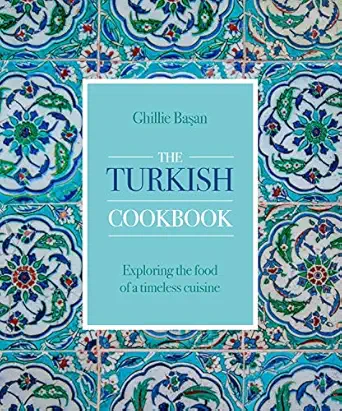Turkish cuisine is a melting pot of flavors, shaped by centuries of history across the Ottoman Empire, blending Central Asian, Middle Eastern, Mediterranean, and Balkan influences. It’s known for its diversity—spanning savory meats, fresh veggies, rich spices, and sweets that’ll make your taste buds sing. Here’s a rundown of some highlights, based on what’s widely celebrated in culinary circles, travel guides, and cultural traditions.
1. Kebabs: The Grilled Glory
Kebabs are the rock stars of Turkish food, with endless variations.
- Adana Kebab: Spicy minced lamb on a skewer, grilled over charcoal, often served with charred peppers and lavash bread.
- Şiş Kebab: Marinated chunks of lamb, beef, or chicken, skewered and grilled to juicy perfection.
- Döner Kebab: Thinly sliced meat (lamb, beef, or chicken) cooked on a vertical rotisserie—think shawarma’s cousin. Often wrapped in pita with tomatoes, onions, and a yogurt or tahini sauce. Turks take their grilling seriously, and the smoky, tender results are a street food staple or a sit-down feast.
2. Meze: Small Plates, Big Flavors
Meze is the Turkish answer to tapas—a spread of small dishes to share, perfect with rakı (anise-flavored spirit).
- Hummus: Creamy chickpea dip, often spiced with sumac or paprika.
- Ezme: Spicy, finely chopped salad of tomatoes, peppers, onions, and parsley.
- Fava: Broad bean puree, sometimes served with dill.
- Sigara Böreği: Crispy pastry rolls stuffed with feta and herbs. You’ll find dozens of options—cold or hot—meant for leisurely nibbling while chatting with friends.
3. Pide: Turkish “Pizza”
Pide’s a boat-shaped flatbread baked with toppings like cheese, minced meat, or spinach. The crust is crispy, the toppings are hearty, and it’s often sliced into strips. A standout is Kaşarlı Pide (with melty cheese) or one with sucuk (spicy sausage). It’s comfort food at its finest, fresh from wood-fired ovens.
4. Dolma and Sarma: Stuffed and Wrapped Delights
- Dolma: Veggies like peppers, tomatoes, or eggplants stuffed with rice, meat, or both, seasoned with dill, mint, and lemon.
- Sarma: Grape or cabbage leaves wrapped around a filling of rice, veggies, or minced meat. Both are often drizzled with olive oil and yogurt. Yaprak Sarma (grape leaf wraps) is a go-to appetizer, tangy and satisfying.
5. Lahmacun: The Ultra-Thin Flatbread
Sometimes called “Turkish pizza,” lahmacun is a thin, crispy dough topped with a spiced mix of minced meat, tomatoes, onions, and parsley. It’s baked quickly, rolled up with fresh greens and a squeeze of lemon, and eaten on the go. Cheap, spicy, and addictive.
6. Köfte: Meatballs with Attitude
Turkish meatballs aren’t your average Joe. They’re spiced with cumin, paprika, and garlic, then grilled, baked, or simmered in sauce.
- İzmir Köfte: Baked with tomatoes and potatoes in a rich sauce.
- Çiğ Köfte: Traditionally raw meat (now often bulgur-based for safety), kneaded with spices and chili paste—intense and fiery. You’ll find köfte in every region, each with its own twist.
7. Mantı: Tiny Dumplings, Big Love
These bite-sized dumplings are filled with spiced beef or lamb, boiled, and served with garlicky yogurt and a drizzle of chili-infused butter. Some regions add tomato sauce or sprinkle sumac on top. It’s labor-intensive to make, so it’s often a special-occasion dish—think ravioli, but with a Turkish soul.
8. Baklava: The Sweet Star
Layers of filo pastry, nuts (usually pistachios or walnuts), and syrup or honey—it’s the dessert that defines Turkish sweets. Gaziantep claims the best baklava, often loaded with bright green pistachios. Crispy, sticky, and rich, it pairs perfectly with a tiny cup of Turkish coffee.
9. Turkish Breakfast (Kahvaltı): A Feast to Start the Day
Turkish breakfast is legendary—a sprawling spread that’s as much about socializing as eating.
- Fresh bread (like simit, a sesame-crusted ring)
- Cheeses (feta, kaşar, or tulum)
- Olives, tomatoes, cucumbers
- Jams, honey, and clotted cream (kaymak)
- Eggs, often menemen (scrambled with tomatoes and peppers) It’s colorful, fresh, and meant to linger over with endless cups of black tea.
10. Lokum (Turkish Delight) and Other Sweets
Beyond baklava, Turkey’s sweets game is strong.
- Lokum: Chewy, sugar-dusted cubes often studded with nuts or flavored with rosewater, lemon, or mastic.
- Künefe: Shredded pastry stuffed with gooey cheese, baked, and soaked in syrup—served hot.
- Helva: A dense, nutty confection made from tahini or semolina, often flavored with pine nuts. These treats are often paired with tea or coffee and shared as gestures of hospitality.
Bonus: Drinks to Sip
- Turkish Coffee: Thick, strong, and served in tiny cups—grounds and all. It’s a ritual, often followed by fortune-telling from the leftover sludge.
- Çay (Tea): Black tea in tulip-shaped glasses, consumed all day, everywhere.
- Ayran: A refreshing, tangy yogurt drink, perfect with grilled meats.
- Raki: Anise-flavored liquor, aka “lion’s milk,” that turns milky when mixed with water—pairs beautifully with meze.
Why It’s Special
Turkish cuisine stands out for its balance—savory and sweet, fresh and rich, simple and complex. It’s deeply tied to the land and seasons, with regional specialties adding depth (like seafood on the Aegean coast or hearty stews in the east). Portions are generous, meals are communal, and hospitality is baked into every bite.


